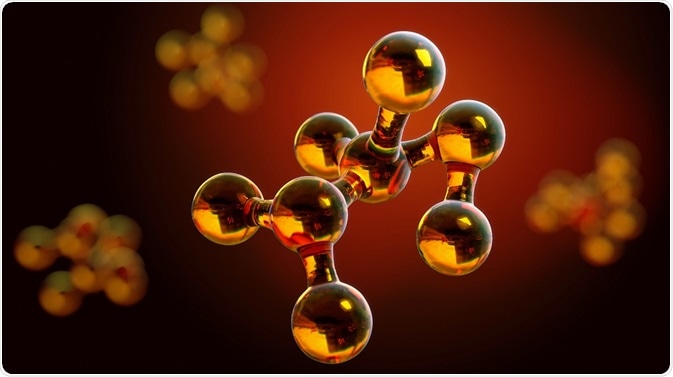Mass spectrometry (MS) is a technique used to measure the masses of molecules and fragments formed during vaporization and ionization.
 Credit: Egorov Artem/Shutterstock.com
Credit: Egorov Artem/Shutterstock.com
The precision of the mass determination makes it possible to identify the molecule accurately. A combination of high sensitivity and precise molecular identification has made MS a ubiquitous technology in life science laboratories.
Time-of-flight mass spectrometry (TOF-MS) uses a detection method based on the time it takes the molecular fragments to arrive at a detector after they are vaporized. For example, in matrix-assisted laser desorption/ionization time-of-flight MS (MALDI-TOF-MS), a laser is used to ionize large molecules which are then separated based on flight times to the detector.
Electrospray (ESI-TOF-MS) and gas chromatography (GC-TOF-MS) are other variations on time-of-flight mass spectrometry.
These instruments are typically very large. However, advancing technologies like miniaturized lasers and ultra-short ion flight tubes have enabled the development of miniature and portable devices. In addition, miniature TOF analyzers require miniaturized control systems to generate electric and magnetic fields and fluid handling technologies (microfluidics).
Applications of miniature time of flight spectrometry
Miniature TOF technology enables MS analysis of samples in the field or at the site of the sample. It has applications across many industries, including:
- Healthcare: Analysis of patient samples at the bedside
- Firefighters: Analysis of potentially hazardous samples during an emergency situation
- Airports: Detection of traces of explosive material
Some examples of miniature TOF instruments are summarized below:
One design for a miniature TOF-MS makes use of a gridless, focusing ion source, an ion reflector constructed of circuitboard material, and an improved microchannel plate detector assembly.
These innovations allow for very high extraction energies and significant reduction in noise. Tests of the instrument showed improved resolution compared to previous models. The design was inexpensive and rugged for portability in the field.
Another instrument was developed for space exploration. The device is designed with small-scale planetary missions in mind. It would need to be suitable for remote operation during long-stay surface missions on multiple small bodies such as moons, Mars, and Mercury, with sample return capabilities.
The goal of the device is analysis of solid materials such as rocks and soil. The design incorporates normal-incidence ultraviolet pulsed laser desorption, a curved-field reflectron, and a gridless ion source. Field tests showed that results were comparable. This design allows a TOF instrument potentially as small as a soda can, without loss of low range detection ability.
MULTUM-S II
The miniature multiturn time-of-flight analyzer (MULTUM-S II) consists of an electron ionization source, multiturn TOF ion optics, a detector, a vacuum system, and electronic circuits. The multiturn TOF analyzer is made of four electrostatic toroidal sectors and two electric toroidal sectors. The total size is 50 cm by 57 cm x 30 cm and the weight is 35 kg.
The inventors were able to separate and weigh pyridine and the isotopic component of benzene at a high mass resolution. It also successfully separated CO2 and N20 gases, which have a mass difference of 0.01 Da.
Further Reading
Last Updated: Feb 26, 2019